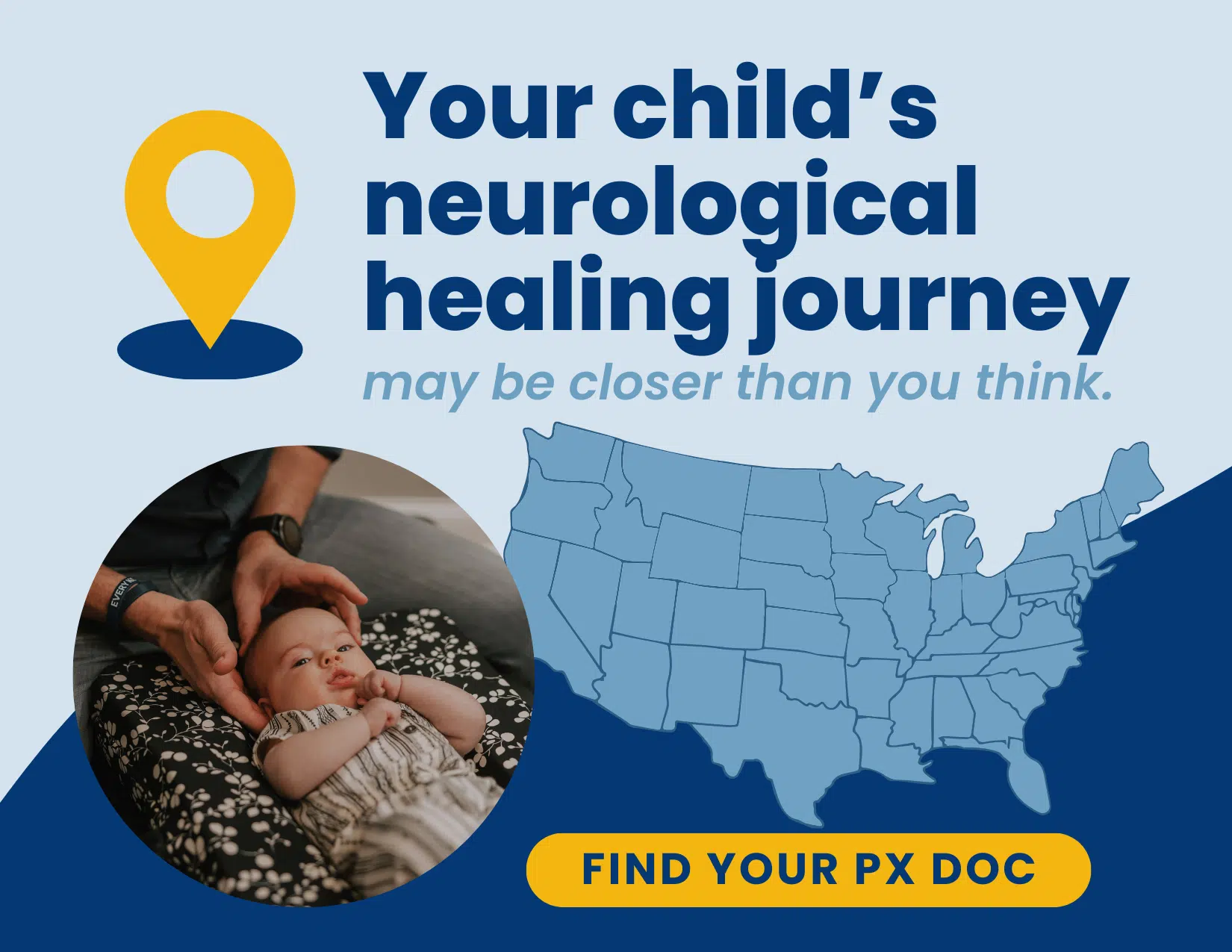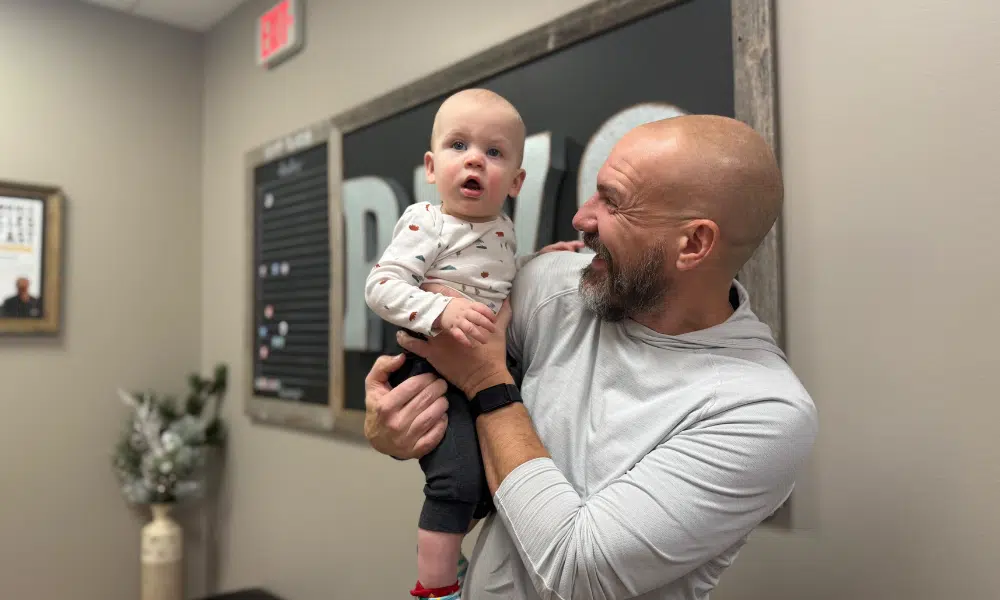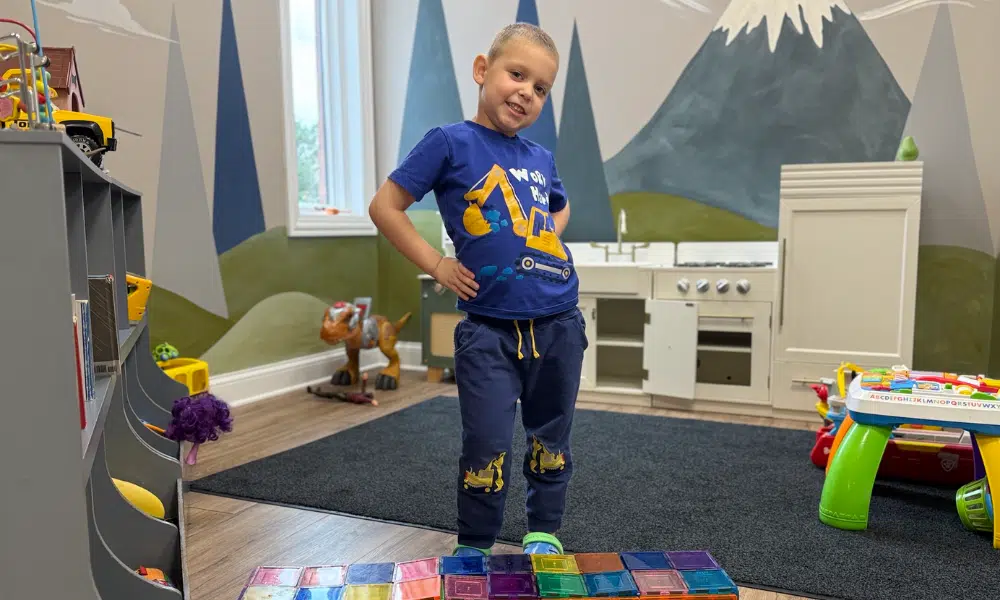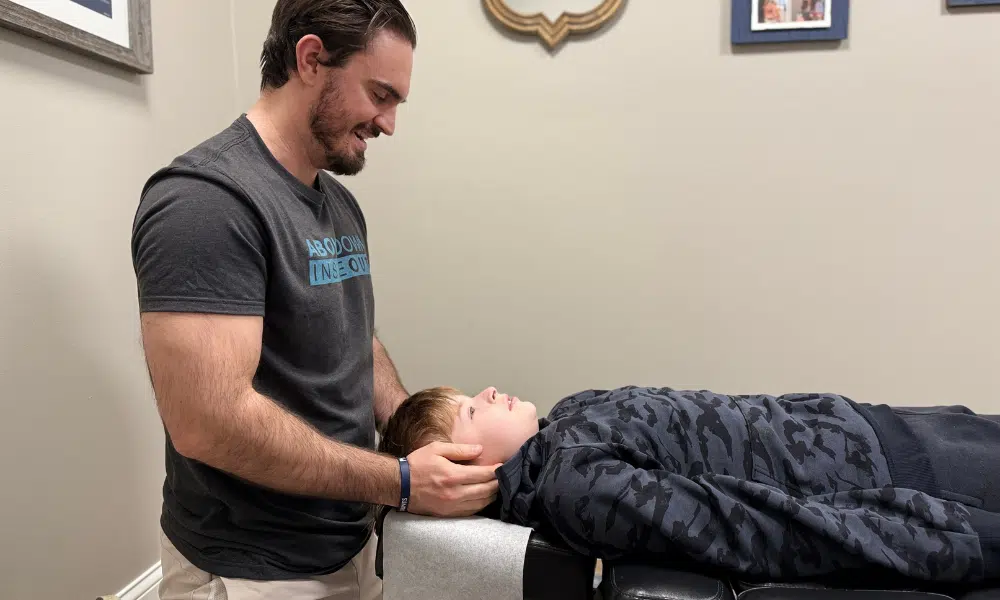For many kids like Noah, the switch to remote learning during the Covid times was an absolute nightmare. Like so many kids today, Noah was already a ‘Raging Bull’ type of child with tons of energy and creativity! But when you’re the type of kid or person who naturally gravitates to the ‘gas pedal’ and goes fast, life can get hard when forced to slow down and stay calm in stressful situations. We discover this with our anxiety test determined by our scans.
And once all the restrictions and lockdowns hit, like millions upon millions of other kids, Noah’s anxiety and frustration boiled over and became a daily problem. And with that anxiety came additional symptoms of ADHD, anger, difficulty sleeping, withdrawal from other activities he loved, and so much more.
Thankfully Noah’s amazing parents not only got him tested for ADHD and Anxiety but also first sought to take a more natural, drug-free route to try and help him. His mother watched an online version of the Perfect Storm workshop on ADHD, Anxiety, and SPD and found the hope and answers she sought!
You can read more about how Noah and his family overcame anxiety and ADHD here!
Signs of Anxiety
To get the best care and support for a child struggling with anxiety, it’s crucial parents first recognize it and get help sorting out what’s going on. And furthermore, diving deep into the child’s case history to find out what the root causes of the anxiety are, is perhaps the most critical part of this process.
Some of the most common signs of anxiety include:
- Feeling restless, wound-up, or on edge.
- Being easily fatigued and often exhausted.
- Having difficulty concentrating; mind going blank.
- Being irritable and easily annoyed or angered.
- Having consistent or chronic muscle tension, tightness, and constant need to stretch or ‘crack’ your neck and back.
- Difficulty controlling feelings of worry.
- Having sleep problems, such as difficulty falling or staying asleep, restlessness, or unsatisfying sleep.
- Frequently dealing with digestive problems such as indigestion, nausea, or constipation.
Like so many other neurological conditions, anxiety usually does not exist alone. As shown in the list of related signs and symptoms above, it often ‘pairs’ with ADHD and other mental health challenges. And going even further, the vast majority of anxiety patients we see in practice also struggle with digestive challenges, weakened immune systems, and even hormonal problems in addition to the mental and emotional toll anxiety takes.
Perhaps the most common sign and symptom related to anxiety, however, is muscle tension, stress, and fatigue. Now in younger, school-age kids, this won’t show up necessarily as actual physical pain or tension they can feel. But instead, think of it almost like ‘sensory tension’ or ‘emotional pain’ that the child feels in their nervous system.
For older kids, teenagers, and adults, this muscle or motor tension is relatively easy to spot as it will come with complaints of neck pain, headaches, mid to upper back pain, and so forth. But in younger children, you have to look a bit harder to find the neuromuscular and motor tone issues that may be related to or even creating some of the anxiety! So much of our kids’ anxiety and sensory integration challenges indeed do stem from stress and tension stuck in the nerves and muscles in their neck and back.
Sounds too simple? Just think about the last time you had a stiff, cranky neck and headache. Were you irritable and easily agitated? Did you notice your heart rate go up a bit easier? How about your sleep and digestion?
So often, the answers to why our kids are struggling and what we can do to help them naturally and without drugs are right there in front of us. But unfortunately, the more ‘advanced’ our healthcare system has become, the more difficult it is to navigate and find the obvious, easy answers and action steps.
Let’s look even further into the science behind anxiety and how you can truly test for not just the signs and symptoms of anxiety but what’s actually causing it to be there in the first place!
We Don’t Guess, We Test!
While that may be an almost rhyming, cute phrase… it’s also absolutely true in our PX Docs offices. While traditional medical doctors and mental health professionals still rely mainly on just surveys and questionnaires on symptoms and genetics, Pediatric + Family Chiropractors are one of the few professions in health care that look first to find the root cause of a child’s anxiety and struggles and run tests to sort out precisely what those are.
As we first mentioned above, much of a child’s anxiety truly can be coming from built-up and stuck tension in their muscles and central or autonomic nervous system. This stuck tension is referred to as subluxation, and when the nervous system gets way out of balance and gets stuck on that fight-or-flight, tense, anxiety-causing side, it’s known as dysautonomia.
Before we get to the exact anxiety test and set of scans we do in our offices, let’s go one step further into looking at one of the most commonly seen but easily overlooked root causes – birth trauma. You can read more in that article link, but the scientific connections between birth trauma and anxiety stem from these two main elements:
- The most commonly injured area during birth intervention and trauma is the upper cervical (neck), brainstem, and cerebellum regions – which is the ‘Air Traffic Control’ center for all neuromuscular function, tone, tension, etc.
- That same commonly injured brainstem area is also home to the most important nerve in the entire body, the vagus nerve.
While that’s a lot of nerdy, neuroscience-type words there, please know that with the testing our PX Docs do routinely and easily in their office; it’s quite easy to spot the subluxation and tension that builds up and creates so much stress and anxiety for so many children. In fact, we’ll show a few snapshots of scans on a teen anxiety case here below:
The scan above is an INSiGHT EMG Scan, and they are extremely similar to the most common medical exam for seizures, an EEG (electroencephalogram). The ‘M’ in EMG, in this case, represents the nerves and muscles that house and protect the spinal cord and brainstem and are the vital gateway for delivering all sorts of sensory information to the brain.
Instead of measuring just cortical (around the skull) activity, the neurospinal EMG measures the electrical activity and tension from the brainstem all the way down to the bottom of the spinal cord and central nervous system. This gives our PX Docs a much more complete picture of the tension throughout the nervous system, instead of being limited to one aspect like a traditional EEG.
To truly find the root cause of anxiety, we can’t limit our testing to simply filling out a survey and listing symptoms, and even for those practitioners who want to look a bit deeper, we can’t look at brain function only. The brain is just one part of the nervous system, interconnected throughout the entire body.
The Vagus Nerve and HRV’s Role in Anxiety
Speaking of nerves that travel throughout the entire body, the most important and far-reaching nerve in the body is the vagus nerve discussed above.
We’ve long known the vagus nerve is crucial in regulating bodily functions such as digestion, cardiac, and respiratory function… but now, as you’ll see in the research citations below, more and more science is coming out to support the role of the vagal nerve disorders and dysautonomia as the main culprit behind anxiety in kids and adults alike.
The latest neuroscience coming out over the last 10 years has shown us that the vagus nerve also has a profound effect on our social, emotional, and mood regulation. In fact, some researchers who work with both anxiety and autism have nicknamed it the ‘Social Vagus’ to highlight how important it is.
Well, what is one of the top 2-3 causes of anxiety in all kids, from teens to toddlers? Social pressures, making friends, engaging and communicating with others, and so forth.
Take a look at this HRV Scan from a patient with chronic anxiety:
This HRV scan is actually supported by medications as well, making it look better than it would without them. Looking at that little white dot and seeing that it moved towards the lower left quadrant on the HRV scan tells us that this patient is struggling from the most classic contributors to anxiety – sympathetic dominance and neurological exhaustion.
Or put another way, he’s constantly “wound up and worn out” simultaneously.
That is a phrase that nearly every single patient or parent dealing with anxiety can relate to. They are constantly on edge, wound up, and tense… yet also constantly exhausted, struggle to sleep, and are on edge.
Drug-Free Care for Anxiety
While it’s still a relatively new approach for many families, the top three (3) improvements parents report to us as their children begin care in our clinic are improved sleep, better mood, and emotional regulation, and more energy. That right there is the perfect recipe for tackling anxiety without all the nasty side effects of drugs and medications!
The best part? This kind of care is not just available in our Chicagoland Clinic, but now in nearly 1000 offices worldwide (and more adding every day)!
You can learn more about our PX Clinical Process, and the amazing INSiGHT Scans discussed and shown above here on our site. Then, make your way over to our PX Docs Directory and enter your city or zip to find your family’s chiropractor right away!
The first step in getting your child help is getting the proper anxiety test. This is exactly why the first thing you need to do is contact a local PX Doc from our network and get your child scheduled for their INSiGHT Neurological Scans today.
Dr. Tony Ebel, DC, CACCP, CCWP
Certified Wellness + Pediatric Chiropractor





